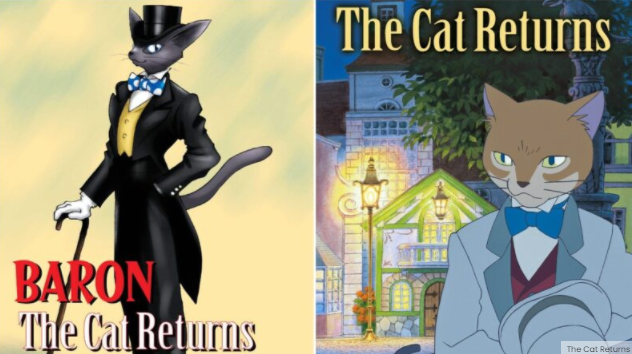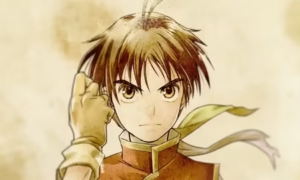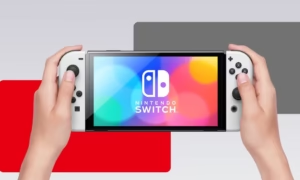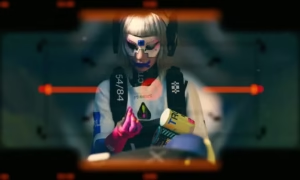Cat companionship in The Cat Returns helps you find acceptance.
Adolescents often long for an escape from the awkward times of growing up, when it is difficult to navigate confusing social dynamics and a period in which awkwardness is omnipresent. It can be not easy to accept yourself. How can someone focus on their individuality when seeking validation from others? High school can be particularly difficult for self-esteem because of the many peers who feed an individual’s internalized inadequacy. We turn to other sources of comfort when others, including ourselves, hurt us. Sometimes animals can bring out the best in us, traits that we don’t recognize.
Studio Ghibli, a well-known Japanese animation studio, adapted Aoi Hiiragi’s’ manga Baron: The Cat Returns into the film in 2002. Studio Ghibli’s first and only theatrically-released spin-off film, The Cat Returns (or Neko no Ongaeshi), is The Cat Returns. The Cat Returns’ main protagonist is the starring Ghibli cat statue, Whisper of the Heart. The studio also adapted Whisper of the Heart, a manga series by Hiiragi. Hiroyuki Morita directed the fantasy film adaptation. It largely retained the manga’s characters, pacing and plot. A few tweaks were made to these delightful tales, however.
Both the manga and film have a similar plot. After saving the Cat Kingdom’s Prince from being struck by a bus, Haru, a shy teenage girl, enters an anthropomorphic world. As a result, Haru begins transforming into a cat. Haru is now trapped in a feline dilemma. The eccentric Cat King wants Haru to marry Prince Lune, his son. Haru attempts to escape this bizarre universe with the help of Baron, a transforming cat and Muta, his fluffy sidekick.
Baron: The Cat Returns is a standalone story. The manga is divided into three chapters: “The Cat Returns”, “The Cat Office”, and “The Kingdom of Cats”. One can read it in one sitting. The film is the same. The Cat Returns is a fast-paced film that runs for only 75 minutes. Each chapter of the manga is essentially the three acts in the film adaptations. Ghibli’s The Cat Returns, however, adds real growth to a few scenes that were not fully developed in the manga.
First, the manga and the film offer different interpretations for Haru, its protagonist. Hiiragi’s Haru is more anime- or manga-like. Haru is very boy-crazy and obsessively watches her classmate Machida, a pretty boy. Haru’s sensory disturbances are indicated by lines protruding from the panels or exaggerated eyes that surround her. Contrary to this, Haru’s friend Hiromi (played in the English dub by Kirsten Bell) is given this romantic infatuation. However, Haru’s love for a boy in Baron The Cat Returns affects her outlook on life. The manga’s sexism is strong, but it is not the easily recognizable teenage awkwardness Haru displays onscreen.
The manga spends more time with Haru and her best friend, Hiromi. Haru rescues Prince Lune using Hiromi’s crosse stick to lift him out of danger. She then snaps the stick in half. Hiromi later accuses Haru, saying she broke all her lacrosse sticks after the Cat Kingdom cats invade Haru’s home. This incident puts a strain on their relationships. Haru’s fractured friendship places an emotional burden on herself since she only has one friend and struggles with morale. Haru must develop her character through the manga’s Hiromi. Haru is more reserved in the film. Although she feels affection for Hiromi, and their relationship is important to the story’s progression, it doesn’t seem like they are in any way connected.
When comparing the text and the screen interpretations, Haru’s mother and Haru’s interactions are of different importance. The most moving scene in the film is Haru’s mother reminiscing about when Haru was a young child caring for a white kitten. Her mother, humming with warmth and affection for Haru’s daughter, recalls Haru telling her mother that she could speak to the stray cat. The heartwarming scene is accompanied by warm, fuzzy tones soft piano music. Haru is shocked to realize that the verbal conversation with Prince Lune after her rescue was true. Her acts of kindness foreshadow the future of Haru. She can make her self-revelation when she realizes that she was sabotaging her self-worth with inadequacies and self-doubt.
Despite Haru’s mother’s presence in the manga, their relationship lacks the Cat Returns adaptation’s emotional depth. Haru’s first film scene with her mother sets the stage for her character development. It also includes a key plot point that will be revealed later. The manga contains many scenes with Haru and her mother, which highlights the silly traits Haru does not have in the film. Haru’s mother intercepts one gift from the Cat Kingdom: boxes of canned mice. They share a moment, causing confusion and a sense of awe. Haru becomes more dependent because of Hiiragi’s portrayal of her fluctuating emotions and still relies upon her mother’s visual reactions.
Art can elicit emotional responses from viewers. Manga and film both draw their characters almost identically. Both mediums use simple facial features to emphasize the cat characters’ details. Criticisms have been levelled at the Cat Returns movie for failing to live up to Studio Ghibli’s animation standards. The lack of detail and whimsicality shown in the flying scenes was specifically condemned by viewers. On the other hand, Hiiragi’s manga has two-page spreads that feature God’s eye views and intricate linework. Her scene is so beautiful that readers may feel vertigo as they look down at the scenery below. In the Cat Kingdom, waterfalls that flow upside-down are a common sight. Haru looks at the beauty of the Cat King’s palace from Hiiragi’s eye and shows that Hiiragi has an eye for architecture.
The films’ dark colour palette and basic art choices may be criticized, but it is important to note the incredible attention paid to the cat characters. The manga’s illustrations are the inspiration for the adaptation. The animation features a slightly different representation of cats. Natori’s ears are modified to look like the Scottish Fold cat’s folded ears. In the manga, the cats’ snouts are protruding, and their eyes have an almond shape similar to real cat eyes. The cats in The Cat Returns have smaller noses and more circular eyes. Hiiragi’s bodyguard black-mask-like black fur markings are visible on Hiiragi’s’ face. The Ghibli cat design eliminates this mask to contrast their black-furred and whiteheads. These changes are subtle but obvious.
The biggest differences between media are the way the Cat Kingdom is represented and the relationship of Haru to a particular cat. Although these details are not included in the movie or manga, they will significantly alter the tone. A grim revelation gives Baron: The Cat Returns manga an unsettling feel. However, Haru’s unhinged expressions in the book and his behaviour reflect the manga humour that readers love. The manga reduces the amount of fat-phobic jokes about Muta, which can sour the film.
Studio Ghibli’s animated film universe somehow has The Cat Returns. Cat-lovers all over the world should be thankful. The story of an angry cat overlord who wants his cat boy to marry a human girl was told in both manga and film. The Cat Returns is a worthwhile film and manga. Through the help of some very cute cats, the relatable teenager protagonist learns valuable lessons in self-love and self-worth.







